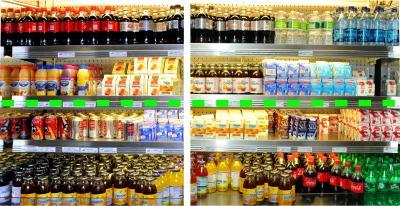A program designed to encourage more healthful food choices through simple color-coded labels and the positioning of items in display cases was equally successful across all categories of employees at a large hospital cafeteria. In an article appearing in American Journal of Preventive Medicine, a team of Massachusetts General Hospital (MGH) researchers report that the interventions worked equally well across all racial and ethnic groups and educational levels.
"These findings are important because obesity is much more common among Americans who are black or Latino and among those of low socioeconomic status," says Douglas Levy, PhD, of the Mongan Institute for Health Policy at MGH, lead author of the AJPM report. "Improving food choices in these groups may help reduce their obesity levels and improve population health."
The authors note that current efforts to encourage healthful food choices by labeling or posting the calorie content of foods have had uncertain results. Even individuals with relatively high educational levels may have difficulty reading and understanding nutritional labels, and the problem is probably greater among low-income or minority individuals with limited literacy. As reported earlier this year, the MGH research team – which includes leaders of the MGH Nutrition and Food Service – devised a two-phase plan to encourage more healthful food purchases without the need for complex food labels.
In the first phase, which began in March 2010, color-coded labels were attached to all items in the main hospital cafeteria – green signifying the healthiest items, such as fruits, vegetables and lean meats; yellow indicating less healthy items, and red for those with little or no nutritional value. The second "choice architecture" phase, which began in June 2010, focused on popular items – cold beverages, pre-made sandwiches and chips – likely to be purchased by customers with little time to spend who may be more influenced by location and convenience. Cafeteria beverage refrigerators were arranged to place water, diet beverages and low-fat dairy products at eye level, while beverages with a red or yellow label were placed below eye level. Refrigerators and racks containing sandwiches or chips were similarly arranged, and additional baskets of bottled water were placed near stations where hot food was served.
The study was designed to measure changes in employee purchases of green-, yellow- and red-labeled items by racial/ethnic categories and by job type during both phases of the program. Data reflecting purchases by more than 4,600 employees, each of whom was enrolled in a program allowing them to pay for meals through payroll deduction, was recorded by cafeteria cash registers and matched to human resources information. While it was possible to track how an individual employee's food choices changed during the study period, no information that could identify an employee was available to the research team. Participants were categorized by self-reported race or ethnicity – white, black, Latino or Asian. Educational level was reflected by job type – service workers; administrative/support staff; technicians, including radiology technicians and respiratory therapists; health professionals, such as pharmacists and occupational therapists; or management/clinicians, which included physicians and nurses.

In the Massachusetts General Hospital cafeteria, color-coded labels indicate the healthiest sandwich choices (green), along with those designated less (yellow) and least (red) healthy.
(Photo Credit: Massachusetts General Hospital Nutrition and Food Service)
At the outset of the study, black and Latino employees and those in job categories associated with lower education purchased more red items and fewer green items than did white employees or those in higher-education job types. But at the end of both phases of the intervention, employees in all groups purchased fewer red items and more green items. A specific analysis of beverage purchases – chosen because the consumption of sugar-sweetened beverage is highest among black and low-income individuals and strongly linked to obesity, diabetes and heart disease – found that the purchase of healthful beverages increased for all groups. In addition, black and low-education employees, who paid the highest cost per beverage at the study's outset, were paying significantly less per beverage purchased at the end of the study period.
All elements of the overall program remain in place at the MGH, and the color-coded labeling has been extended to all food service sites. "Further study is needed to determine the long-term effect of these interventions and whether additional steps could improve their effectiveness in particularly vulnerable populations," says Levy, an assistant professor of Medicine at Harvard Medical School. "But because these measures are both simple and inexpensive to implement, they could easily be tried in a variety of food sales environments – such as cafeterias, convenience stories and even vending machines."

The before (left) image shows sugar-sweetened soft drinks and juices were mixed together with diet beverages and low-fat dairy items.The after (right) image shows water, diet beverages and other healthy choices are placed at or above eye level (dotted green line), while less healthy items are below.
(Photo Credit: Massachusetts General Hospital Nutrition and Food Service)
Source: Massachusetts General Hospital